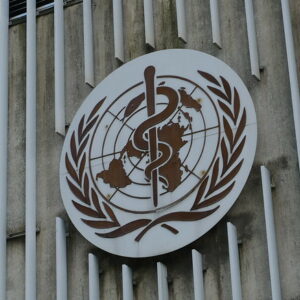Paid in part by Michael R. Bloomberg’s billions and U.S. taxpayers, the World Health Organization (WHO) has officially denounced e-cigarettes and vapor products. In a mystifyingly misleading report published July 27, the WHO has demonized e-cigarettes, urging governments to “strictly regulate” the newfangled disruptive technologies, dismissing (if not ignoring) the very notion and science of tobacco harm reduction.
Not that anyone is surprised. Despite mounting scientific evidence in support of these products, in 2019 the Secretariat for the WHO’s Framework Convention on Tobacco Control urged member parties “to remain vigilant towards” novel tobacco harm reduction products, including e-cigarettes and heated tobacco products, declaring vaping as a “treacherous … public health disaster.”
This latest report is full of both alarmism and misleading information. Just six pages in and the WHO purports “[c]hildren and adolescents who use [e-cigarettes] can double their risk of smoking cigarettes.” There is zero evidence to support this. According to data from the Centers for Disease Control and Prevention, in the United States, smoking rates among young adults are at their lowest levels with 11.9 percent of American adult smokers being between 18 to 24 years old in 2019. Conversely, in 2009, 22.5 percent of smokers were young adults.
The report also fails to acknowledge harm reduction. In 212 pages, “harm reduction” is mentioned a total of four times and when mentioned, the WHO paints a picture that tobacco companies are using the concept to promote the use of their products and such marketing is “undermining successful tobacco control initiatives.”
If tobacco control measures were effective, smokers would not have developed the modern electronic cigarette. In its report, the WHO acknowledges that e-cigarettes “were first developed by companies independent of the tobacco industry,” but now, tobacco companies have entered the market. Well, why shouldn’t they? Manufacturers should be able to market less harmful alternatives that help smokers quit combustible cigarettes. More importantly, a case could be made that the tobacco companies should be mandated to produce reduced-harm products (even though any government mandate is problematic). The WHO is the same organization that seeks to reduce harm in road accidents by pushing for automobile manufacturing standards. This approach should be applied to tobacco.
Damningly, the report disregards the vast array of evidence of e-cigarettes’ reduced harm and their ability to help adults quit smoking and remain smoke-free. For example, the WHO points out that the U.S. surgeon general has found “inadequate” information to determine if e-cigarettes “increase smoking cessation.”
The organization should stick to the Royal College of Physicians’ (RCP) findings. While the U.S. surgeon general is an esteemed office, its own 1964 report on tobacco’s ill effects came exactly two years after the RCP 1962 report which “highlighted the link between smoking and lung cancer” and other health issues. In 2016, the RCP found e-cigarettes “unlikely to exceed 5 percent of the harm from smoking tobacco.” In the autumn of 2019, and in the wake of the spat of vaping-related lung injuries in the U.S., the agency reiterated that vaping is “far less harmful than smoking tobacco,” and urged users to only buy from “mainstream suppliers who are selling regulated products.”
Interestingly, while the WHO has proposed countries ought to ban the sale of e-cigarettes, they remain steadfast in protecting the sale of much harmful combustible cigarettes by urging countries to not only raise excise taxes on cigarettes, as well as raising these taxes “significantly and periodically.” The WHO claims that tax increases on tobacco products “is the single most effective tobacco control measures” and that cigarette tax increases “can fund expanded government health programs.” Further, the WHO recommends countries strengthen both administration and enforcement of tobacco taxes.
Not only was the report “supported by a grant from Bloomberg Philanthropies,” but for some odd reason it “should not be regarded as reflecting the position of Bloomberg Philanthropies,” yet the report reads like a Christmas-in-July wish list for a Bloomberg-created anti-tobacco regime.
Prior to becoming a so-called philanthropic autocrat, Bloomberg was mayor of New York City, where he launched an anti-tobacco crusade upon first entering office. By the end of 2002 (after being elected in 2001), Bloomberg’s administration banned smoking both in public places, including bars and restaurants, as well as increased the city’s cigarette tax. This made the Big Apple home to the U.S.’s highest cigarette prices. In late 2019, on top of the $1 billion Bloomberg had already donated to anti-tobacco groups and efforts, the former mayor announced a $160 million campaign to “fight flavored e-cigarettes.”
The WHO has officially launched a war on tobacco harm reduction, but this report is not really a report, and rather, reads like a Bloomberg-penned memo endorsing his nanny state policy “solutions” and applying them to the world. Ultimately, the real winners are cigarettes as the WHO continues to recommend governments rely on cigarette taxes, while simultaneously block adult access to tobacco harm reduction.

